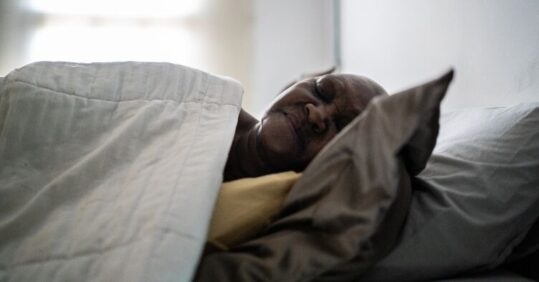Night-time blood pressure monitoring needed to diagnose some hypertension patients, study finds

Patients with undiagnosed high blood pressure are more likely to be picked up by general practice if they undergo 24-hour monitoring, according to a study undertaken by the University of Oxford.
Research has shown that for some patients at risk of cardiovascular disease, their blood pressure will rise only at night and remain low during the day. Daytime blood pressure measurements are therefore not capable of detecting high blood pressure in these patients at risk of heart disease.
The researchers suggest that routinely measuring blood pressure at night-time would help further in identifying the one in eight adults in England who have undiagnosed hypertension, helping reduce death and disability from cardiovascular disease.
Related Article: NHS 10-year plan: What does it mean for nursing?
The findings are published in the British Journal of General Practice.
Current UK NICE guidelines recommend that hypertension is diagnosed on daytime blood pressure measurements only. Home blood monitoring kits do not work when an individual is asleep, so they cannot record a night-time increase in blood pressure, and since the Covid-19 pandemic, 24-hour ambulatory blood pressure monitoring (ABPM) has become less frequent in primary care.
The researchers analysed data from 21,739 patients who were admitted to hospital. They looked at blood pressure patterns over 24 hours and compared the findings with blood pressure patterns from 585 patients in primary care who had been monitored for 24 hours during their normal daily activities using ABPM.
The patients were termed ‘dippers’ where night-time blood pressure is lower than the day (the case for healthy young people), ‘non-dippers’ where night-time and daytime blood pressures are similar or ‘reverse dippers’ where blood pressure rises occurred only at night.
The findings show that almost half of the hospital admitted patients and around 15% of the general practice cohort were reverse dippers. The number was lower in general practice because it included a higher proportion of people diagnosed with hypertension. This group are likely to be dippers rather than reverse dippers because of the setting in which they were diagnosed.
Related Article: Funded nurse workforce plan needed for neighbourhood health services
Co-author Professor Lionel Tarassenko, from the University of Oxford, said: ‘Reverse dippers have their lowest blood pressure during the day, and so they will be falsely reassured by day-time monitoring at home or in the GP clinic. Day-time blood pressure measurements are not enough: it is vitally important to identify who is a reverse dipper through 24-hour ambulatory blood pressure monitoring.’
Across all sexes and in hospital and community patient groups, at least one in three reverse dippers had at least one cardiovascular disease.
Laura Armitage, co-author from the University of Oxford and a practising GP, said: ‘Our research highlights the need for GPs to offer 24-hour blood-pressure assessment to their patients. This is particularly important for those above the age of 60, as the higher night-time blood pressure increases with age and blood pressure checks in the surgery and patient-self monitoring at home is not capable of picking up high night-time blood pressure.’
Related Article: Over one million children living in homes causing asthma and chronic illness

See how our symptom tool can help you make better sense of patient presentations
Click here to search a symptom




